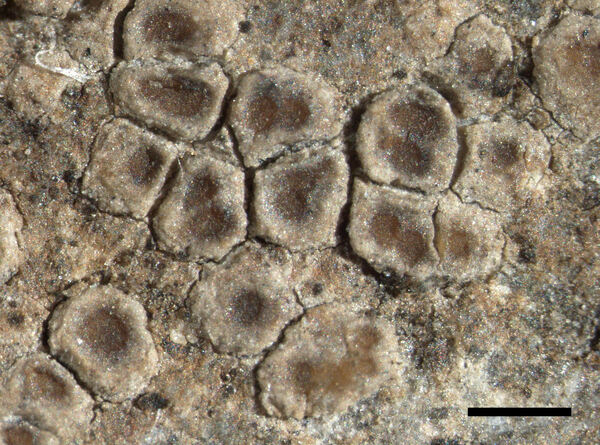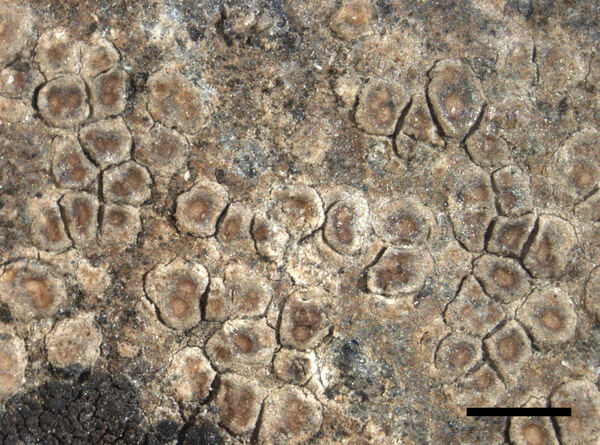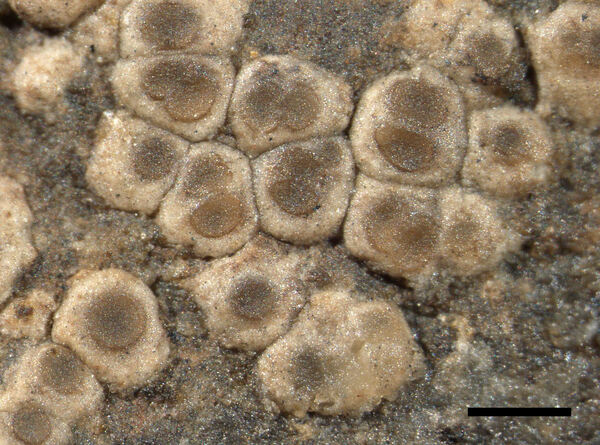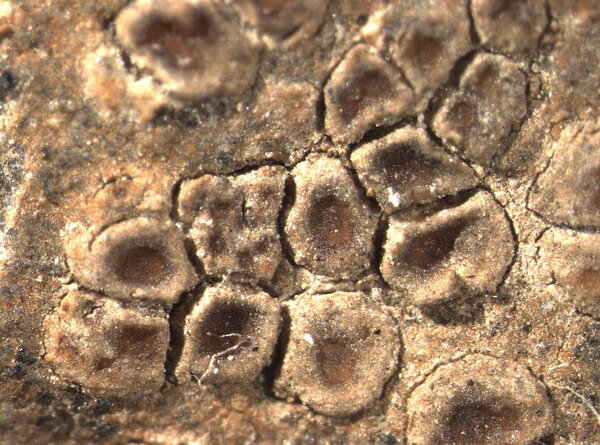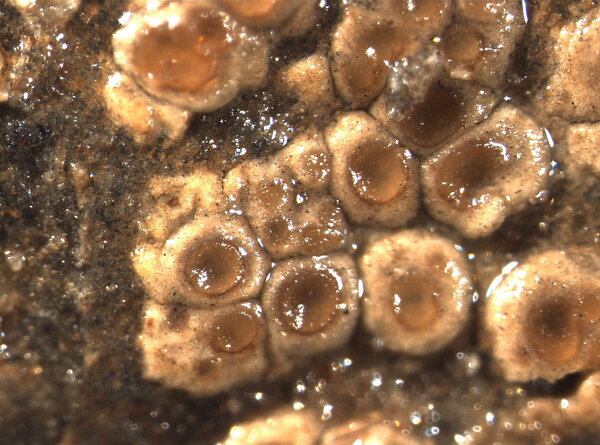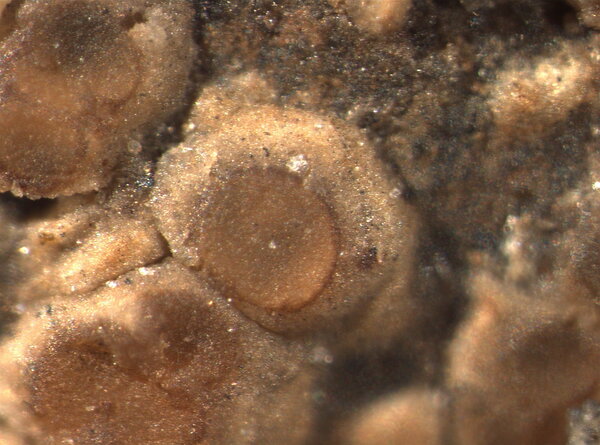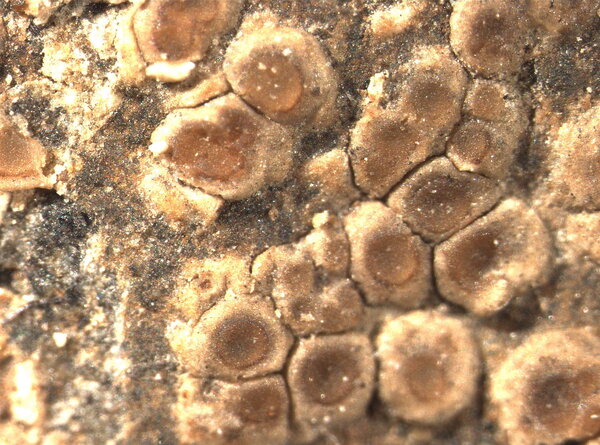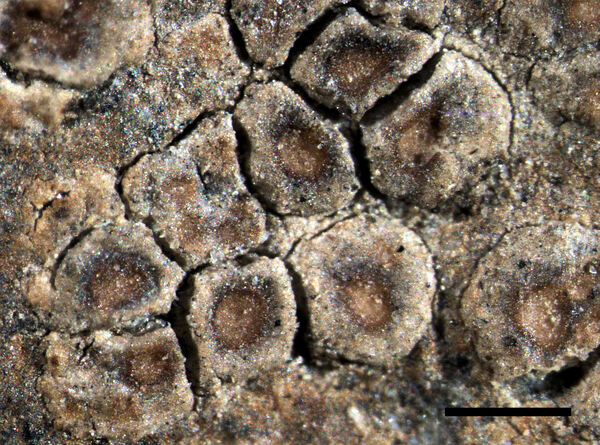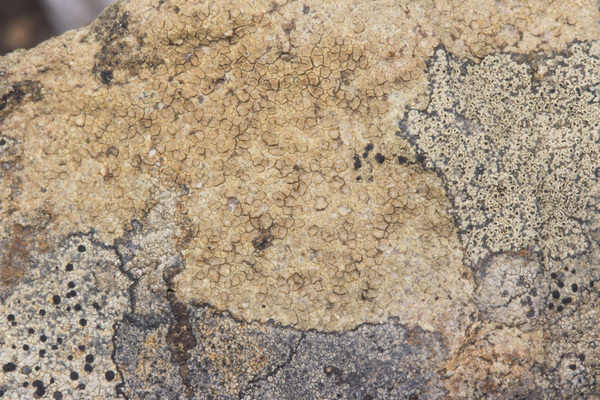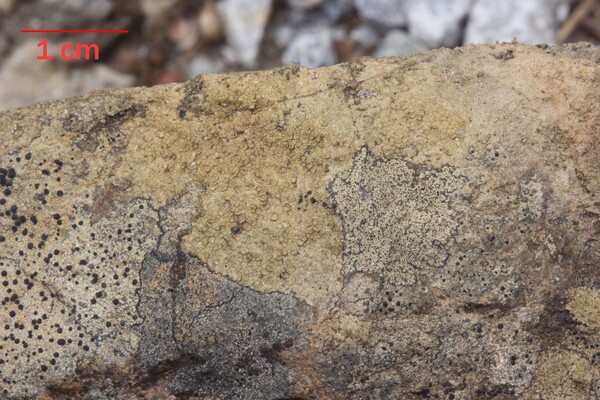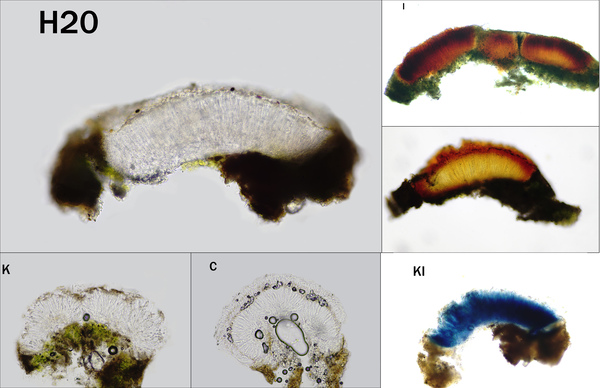Hymenelia ceracea (Arnold) M. Choisy
Bull. mens. Soc. linn. Soc. Bot. Lyon, 18: 145, 1949. Basionym: Aspicilia ceracea Arnold - Flora, 42: 149, 1859.
Synonyms: Ionaspis ceracea (Arnold) Hafellner & Türk; Lecanora ceracea (Arnold) Stizenb.
Distribution: N - TAA (Nascimbene & al. 2022), Lomb (Kantvilas 2014), Piem (Isocrono & al. 2003, 2004).
Description: Thallus crustose, mostly episubstratic, very thin, continuous to rimose-areolate, smooth, ochre-orange, to pale brown, sometimes poorly evident, forming up to 8(-10) cm wide patches. Apothecia 0.2-0.5 mm across, at first immersed, later slightly prominent, with a concave to flat, ochre-orange to brown-orange disc, and a rather thick and prominent, finally often excluded proper margin. Epithecium pale reddish brown, N-, K-; hymenium colourless, 70-130 µm high; paraphyses mostly simple, submoniliform in upper part, the apical cells not swollen; hypothecium colourless. Asci 8-spored, cylindrical-clavate, the outer wall K/I+ blue, but the inner walls and apical dome K/I-. Ascospores 1-celled, broadly ellipsoid, 10-16 x (6-)7-9.5 µm. Pycnidia reddish. Conidia short-bacilliform. Photobiont chlorococcoid (Asterochloris), the cells <15 µm wide. Spot tests: thallus K- C-, KC-, P-, UV-. Chemistry: without lichen substances.Note: on siliceous rocks, including pebbles and stones near the soil, usually in upland areas; overlooked, or confused with superficially similar, small Acarospora-species, to be looked for in the mountains of Southern Italy. Perhaps this is a synonym of H. lacustris. The record from Venezia Giulia in Nimis (1993: 317) has been excluded, as the locality is outside Italy.
Growth form: Crustose
Substrata: rocks
Photobiont: green algae other than Trentepohlia
Reproductive strategy: mainly sexual
Pioneer species
Commonnes-rarity: (info)
Alpine belt: rather rare
Subalpine belt: rare
Oromediterranean belt: absent
Montane belt: very rare
Submediterranean belt: absent
Padanian area: absent
Humid submediterranean belt: absent
Humid mediterranean belt: absent
Dry mediterranean belt: absent
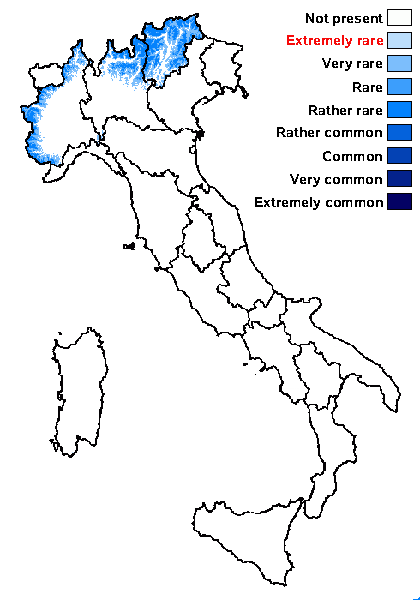
Predictive model

Michel David - Source: http://www.lichensmaritimes.org/index.php?task=fiche&lichen=142&lang=en
France, Roscanvel Fraternitè
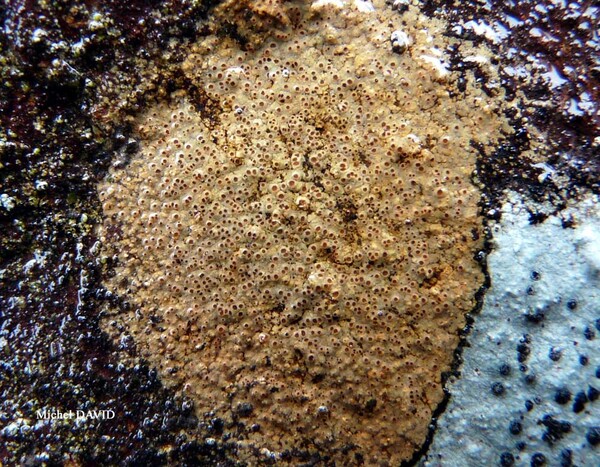
Michel David - Source: http://www.lichensmaritimes.org/index.php?task=fiche&lichen=142&lang=en
France, Roscanvel Fraternitè
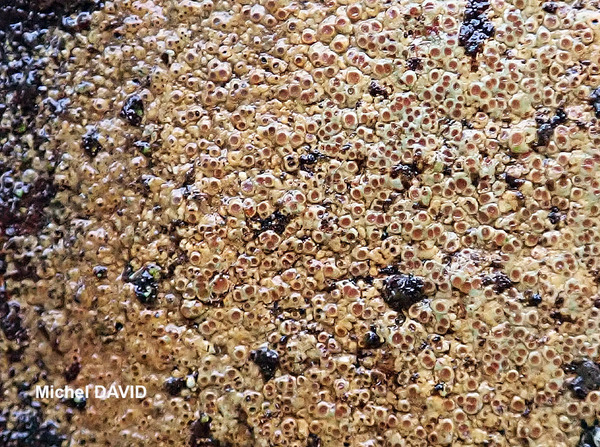
Michel David - Source: http://www.lichensmaritimes.org/index.php?task=fiche&lichen=142&lang=en
France, Roscanvel Fraternitè

Michel David - Source: http://www.lichensmaritimes.org/index.php?task=fiche&lichen=142&lang=en
France, Roscanvel Fraternitè
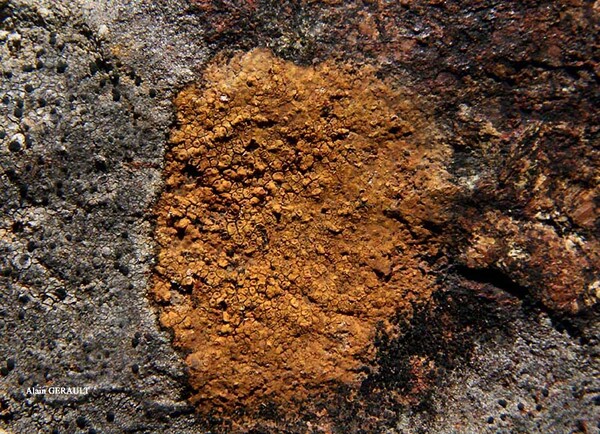
Alain Gerault - Source: http://www.lichensmaritimes.org/index.php?task=fiche&lichen=142&lang=en
France, Roscanvel Fraternitè
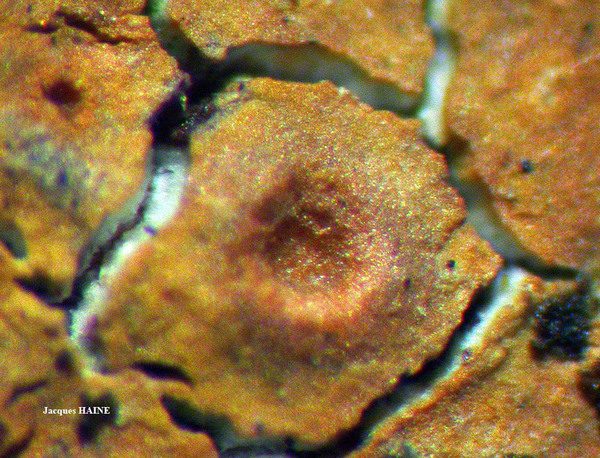
Jacques Haine - Source: http://www.lichensmaritimes.org/index.php?task=fiche&lichen=142&lang=en
France, Roscanvel Fraternitè

Jacques Haine - Source: http://www.lichensmaritimes.org/index.php?task=fiche&lichen=142&lang=en
France, Roscanvel Fraternitè

Jacques Haine - Source: http://www.lichensmaritimes.org/index.php?task=fiche&lichen=142&lang=en
France, Roscanvel Fraternitè
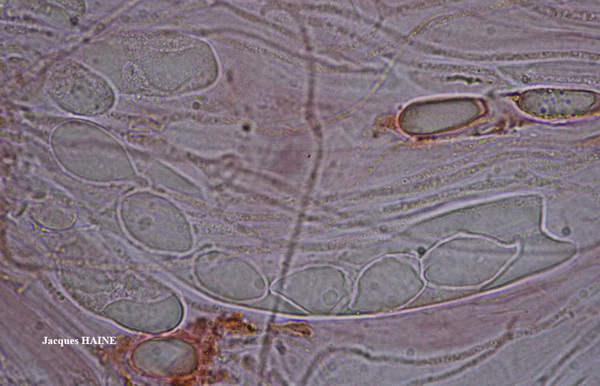
Jacques Haine - Source: http://www.lichensmaritimes.org/index.php?task=fiche&lichen=142&lang=en
France, Roscanvel Fraternitè
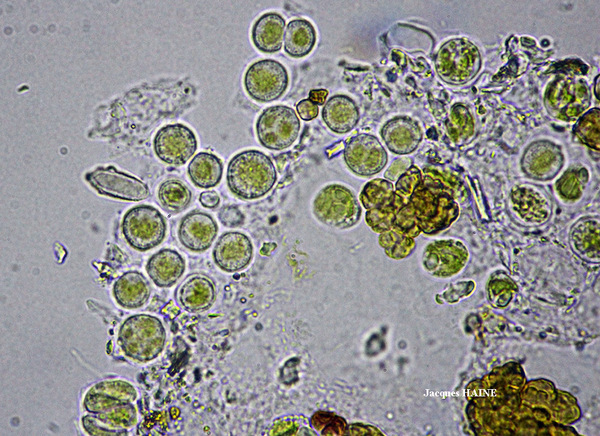
Jacques Haine - Source: http://www.lichensmaritimes.org/index.php?task=fiche&lichen=142&lang=en
France, Roscanvel Fraternitè
photobiont


Felix Schumm - CC BY-SA 4.0
[ABL79201], Brazil, Rio Grande do Sul, Agudo, Cascata Raddatz, in
Atlantic rain forest on rock along river. 29°35'12'' S, 53°10'49'' W, 250
m. Leg. A. Aptroot (no 79201), 15 July 2019, det. A. Aptroot 2019.
Growth form: Crustose
Substrata: rocks
Photobiont: green algae other than Trentepohlia
Reproductive strategy: mainly sexual
Pioneer species
Commonnes-rarity: (info)
Alpine belt: rather rare
Subalpine belt: rare
Oromediterranean belt: absent
Montane belt: very rare
Submediterranean belt: absent
Padanian area: absent
Humid submediterranean belt: absent
Humid mediterranean belt: absent
Dry mediterranean belt: absent

Predictive model

Michel David - Source: http://www.lichensmaritimes.org/index.php?task=fiche&lichen=142&lang=en
France, Roscanvel Fraternitè

Michel David - Source: http://www.lichensmaritimes.org/index.php?task=fiche&lichen=142&lang=en
France, Roscanvel Fraternitè

Michel David - Source: http://www.lichensmaritimes.org/index.php?task=fiche&lichen=142&lang=en
France, Roscanvel Fraternitè

Michel David - Source: http://www.lichensmaritimes.org/index.php?task=fiche&lichen=142&lang=en
France, Roscanvel Fraternitè

Alain Gerault - Source: http://www.lichensmaritimes.org/index.php?task=fiche&lichen=142&lang=en
France, Roscanvel Fraternitè

Jacques Haine - Source: http://www.lichensmaritimes.org/index.php?task=fiche&lichen=142&lang=en
France, Roscanvel Fraternitè

Jacques Haine - Source: http://www.lichensmaritimes.org/index.php?task=fiche&lichen=142&lang=en
France, Roscanvel Fraternitè

Jacques Haine - Source: http://www.lichensmaritimes.org/index.php?task=fiche&lichen=142&lang=en
France, Roscanvel Fraternitè

Jacques Haine - Source: http://www.lichensmaritimes.org/index.php?task=fiche&lichen=142&lang=en
France, Roscanvel Fraternitè

Jacques Haine - Source: http://www.lichensmaritimes.org/index.php?task=fiche&lichen=142&lang=en
France, Roscanvel Fraternitè
photobiont


 DOLICHENS
DOLICHENS

